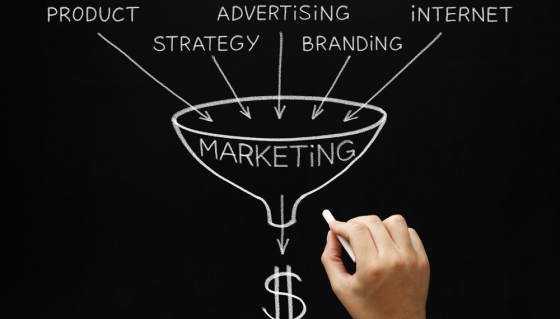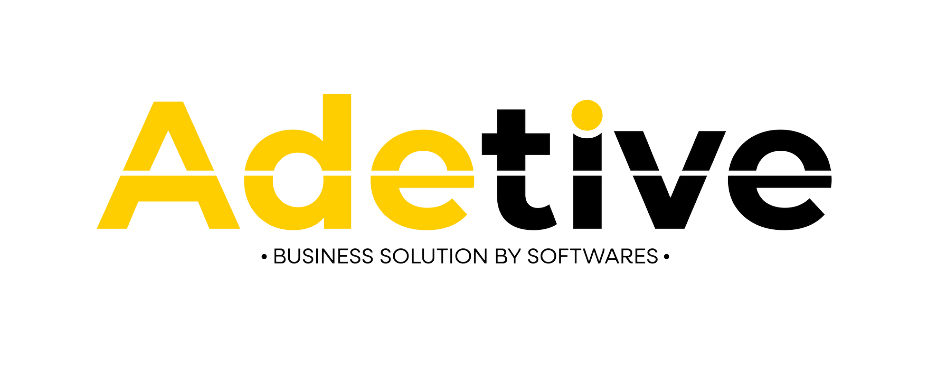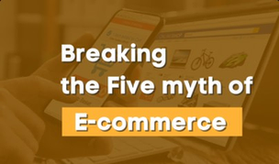
Back
THE ULTIMATE GUIDE TO MARKETING CAMPAIGNS

1. The LIP BAR’s “Something BAWSE is coming :
Are you ready for something bawse? Well. Get ready, because The Lip Bar is about to drop something major. After months of hard work, we are finally ready to reveal our newest and most exciting product launch yet. This beauty brand is known for their bold lip colors and their commitment to quality, and their upcoming launch is sure to take their products to the next level. Our Something BAWSE collection is an incredible range of lipsticks, glosses, and other lip products that will take your makeup game to the next level.
2. Meta (Formerly Facebook) “The metaverse” :
The Metaverse is a term used to describe a shared virtual space that exists in the digital world. Over the last few years, Meta, formerly known as Facebook, has become one of the leading players in the Metaverse. The possibilities of the metaverse are endless. It is a place Where people explore, learn and create a virtual world.
3. POPEYES ” Megan Thee Stallion Hottie sauce ” :
It’s official: Popeyes has unveiled their newest menu item and it’s hotter than ever! The fast-food chain has just released their new Megan Thee Stallion Hottie sauce, inspired by the Houston-born rapper. But the new Megan Thee Stallion Hottie sauce is unlike anything they’ve ever released before. According to Popeyes, it’s a “smooth and creamy blend of bold spices and zesty citrus.”
4. Cheerios : ” Good for round ” :
When it comes to breakfast, Cheerios is one of the most popular and beloved cereals out there. But what makes Cheerios so special? At Cheerios, we believe that good goes round. From the nutritious oats in our cereal to the positive messages we share with our fans, we strive to make the world a better place. Our cereal is made with whole grain oats, which are high in fiber and help keep you fuller longer. Plus, Cheerios are low in sugar and loaded with essential vitamins and minerals. A bowl of Cheerios is a nutritious way to start your day.
5. Apple ” Shot on Iphone ” :
Have you ever been in awe of an incredible photo you’ve seen on social media and wondered “how did they take such an amazing shot?” Chances are, it was taken with an iPhone. The “Shot on iPhone” campaign, launched by Apple in 2016, has been inspiring photographers all around the world to capture their artistry using only their iPhones. The campaign has hosted several photo competitions and exhibitions to showcase the incredible photos taken on an iPhone.
6. The General: “Re-brand” :
As a forward-thinking insurance company, The General is committed to providing our customers with the best service and value possible. We understand that in today’s competitive market, it takes more than just quality coverage to stand out from the crowd. At The General, we’re focused on creating an experience that truly puts our customers first. Our new brand reflects this mission, emphasizing our dedication to providing quality coverage and exceptional customer service. In addition to our re-branding efforts, we’re also investing in new technology and services that make it easier for our customers to manage their insurance needs.
7. Airbnb: “Made Possible by Hosts” :
When it comes to traveling, there’s nothing quite like the feeling of discovering a new place. But what really makes a trip special is the people you meet along the way. That’s why Airbnb is so excited to highlight the incredible hosts who make our platform possible. Hosts have the unique ability to share their home and community with guests from around the world. They help give travelers an authentic experience of their destination, which can’t be found anywhere else.
What is a marketing campaign?
-
A marketing campaign is a series of activities designed to promote a product, service, or cause.
-
It typically involves setting goals, developing a strategy, and executing tactics to drive awareness and engagement.
-
Examples of tactics used in marketing campaigns include email campaigns, search engine optimization (SEO) activities, social media campaigns, influencer outreach, and targeted advertising.
Types of marketing campaign :
1. Product Marketing Campaign :
-
A product marketing campaign is a comprehensive strategy used to promote a product or service.
-
It typically involves creating a suite of marketing materials and activities that are designed to generate awareness, interest, and sales of the product or service.
-
This includes creating advertising campaigns, developing promotional materials, creating digital and social media content, and leveraging influencers to spread the message.
-
Product marketing campaigns are essential for businesses looking to make a lasting impact on their target customers.
2. Brand Development Campaign :
-
A Brand Development Campaign is a strategic effort to create or enhance a brand’s identity, reputation, and visibility.
-
It typically involves a combination of marketing techniques and tactics such as public relations, advertising, and social media to build a stronger and more recognizable brand.
-
The end goal of a brand development campaign is to create a positive perception of the brand and drive sales. It is important to understand the target audience and their needs in order to create an effective campaign.
3. Email Marketing Campaign :
-
Email marketing is an effective and cost-efficient way to reach current and potential customers.
-
It allows companies to directly engage with their audience and is an excellent tool for creating brand awareness, boosting sales, and increasing customer loyalty.
-
An effective email marketing campaign requires careful planning and execution. This includes creating interesting content, crafting an effective subject line and call-to-action, segmenting your list, and using powerful analytics to track results.
-
When done correctly, email marketing can be an extremely successful way to reach and engage with customers.
4. Content Marketing Campaign :
-
Content marketing is a form of marketing focused on creating, publishing, and distributing content for a target audience online.
-
It is often used by businesses in order to increase brand awareness, generate leads, and drive more sales. Content marketing campaigns can include a wide range of content, such as blog posts, videos, infographics, eBooks, and more.
-
It is important to create content that is relevant to your target audience and resonates with them.
-
Additionally, you should use different tactics to promote your content, such as SEO, social media, and email marketing.
-
By creating a content marketing campaign, you can reach your target audience, engage with them, and build trust with them.
5. User-Generated Content Campaign :
-
User-Generated Content (UGC) campaigns are becoming increasingly popular in the digital marketing landscape.
-
These campaigns involve leveraging user-generated content from customers and other stakeholders to promote a product or service in a creative manner.
-
This type of campaign is effective in driving engagement and building brand loyalty. UGC campaigns can include user testimonials, reviews, photos, videos, and more.
-
These campaigns are often used to generate word-of-mouth promotion, build trust among potential customers, and increase customer engagement. UGC campaigns can be a great way to create a connection between customers and a brand.
6. Public Relations / Awareness Campaign :
-
Public Relations (PR) is a form of communication used to create and maintain a positive public image and establish a relationship between an organization, its stakeholders, and the public.
-
PR campaigns can be used to raise awareness about a company, product, service, or issue. They can be used to build trust, create a positive perception of the organization, and engage stakeholders.
-
PR campaigns can also help to increase sales, improve customer relations, and promote a positive corporate culture.
-
Awareness campaigns can include press releases, media events, interviews, press conferences, and other activities to increase public awareness of an organization and its products or services.
7. Direct Mail Campaign :
-
Direct Mail Campaigns are a great way to reach out to a large group of people and promote your products and services.
-
They are cost-effective and can be tailored to fit your specific target audience. With a Direct Mail Campaign, you can send out personalized messages to each individual with information about your product or services.
-
You can also include promotional offers, discounts, and coupons to encourage people to purchase your products and services.
-
Direct Mail Campaigns are a great way to build relationships with your customers and to increase sales.
8. Affiliate Marketing Campaign :
-
Affiliate marketing is a performance-based marketing strategy in which businesses reward affiliates for referring customers and driving sales.
-
An affiliate marketing campaign can be a great way to drive more traffic to your website and increase sales.
-
Through an affiliate program, you can incentivize your affiliates to promote your products and services to their own audiences, and reward them for any successful sales they generate.
-
Additionally, you can track the success of your affiliate marketing campaign in real-time and adjust your strategy accordingly.
9. Sociall Media Campaign :
-
A Social Media Campaign is an online marketing strategy used to promote a business, product, or service through various social media channels.
-
It involves creating content to share on various social media platforms, such as Facebook, Twitter, Instagram, and YouTube, in order to reach a wide audience and engage with potential customers.
-
Social media campaigns are often used to create awareness of a brand, build relationships with customers, and generate leads.
-
They can also be used to increase website traffic, build brand loyalty, and increase sales. Social media campaigns require careful planning, creativity, and execution, but when done correctly, they can be an effective and cost-efficient way to market a business.
10 . Acquisition Marketing Campaign :
-
An acquisition marketing campaign is a type of marketing campaign that is designed to attract new customers and increase revenue.
-
This type of campaign typically focuses on targeted messaging that appeals to a specific audience, such as potential customers who are in the market for a product or service.
-
Acquisition marketing campaigns can include tactics such as email campaigns, direct mail, content marketing, display advertising, and more.
-
By focusing on a particular audience, acquisition marketing campaigns can help to maximize ROI and drive more conversions.
11. Paid Marketing / Advertising Campaign :
-
Paid marketing or advertising campaigns involve a company paying for placement of their products or services in various media channels.
-
This includes television, radio, print, online, and other forms of advertising. These campaigns are often used to reach new audiences, increase brand awareness, and boost sales.
-
Paid marketing campaigns can be both effective and cost-efficient, allowing a company to get their message out to a large number of people quickly.

Lorem ipsum dolor sit amet, consectetur adipiscing elit, sed do eiusmod tempor incididunt ut labore et dolore magna aliqua.
Marketing Campaign Components :
1. Goals and key progress indicators :
-
Goals are the overall objectives of a marketing campaign that the team is trying to achieve, such as increased awareness or increased sales.
-
Key progress indicators (KPIs) track the progress of the marketing campaign against these goals. Examples of KPIs may include conversion rates, website traffic, and engagement metrics.
2. Channels :
-
Channels in marketing campaigns are the methods through which a company communicates its message to its target audiences.
-
These channels can include traditional media such as television, radio and print, as well as digital channels such as websites, email, social media and other digital platforms.
3. Budget :
-
Budget is an important component of any marketing campaign.
-
It is a plan of how much money will be allocated to each aspect of the campaign, such as advertising, public relations, market research, creative materials, and staff resources.
-
Having a budget in place helps marketers stay within their limits and ensure the success of their campaigns.
4. Content Format(s) :
-
Content formats in marketing campaigns can include text, images, videos, audio, infographics, interactive content, and more.
-
It is important to consider the different types of content formats when planning a campaign as each type of content can be used to reach different types of audiences and to achieve different objectives.
5. Team :
-
Team is the group of individuals responsible for delivering a marketing campaign.
-
The team is typically made up of specialists in areas such as creative, media, copywriting, strategy, analytics, and other areas related to the campaign.
-
The team works together to develop the strategy, create content, execute the campaign, and measure the results.
6. creative Assets :
-
Creative Assets are components of a marketing campaign that provide a visual representation of the brand, product, or message.
-
These may include logos, photographs, illustrations, videos, and other digital media. Creative Assets help to create a consistent brand identity and can be used in a variety of ways, such as in print, online, and television advertising.
Planning your marketing campaign :
1. Set a purpose and goal for your campaign :
-
The purpose of this campaign is to increase brand recognition and awareness among our target audience and drive more traffic to our website.
-
The goal of this campaign is to increase website visits by 25% and generate 10,000 new followers on our social media pages.
2. Establish how you’ll measure your campaign :
-
Analyze the data & adjust as neededBy measuring the success of your campaign, you can determine the effectiveness of your messaging and the overall success of your outreach efforts.
-
Measuring the success of your campaign can include tracking the following metrics:
-
Number of impressions
-
Number of clicks
-
Conversion rate
-
Cost per conversion
3. Define your target audience :
-
The target audience for a business or product is the specific group of consumers that the business or product is designed to reach and appeal to.
-
This group can be identified through a variety of demographic, psychographic, and behavioral characteristics.
4. Set a concept for your campaign and get in contact with the right team :
-
Concept : A campaign to promote the importance of sustainability and environmental stewardship.
-
Team : The best team to contact for this concept would be environmental organizations such as Greenpeace, the World Wildlife Fund, and the Sierra Club, as well as other organizations dedicated to preserving the environment.
5. Choose the channels on which you’ll run your campaign :
-
The channels to run a campaign will depend on the type of campaign, the target audience, and the goals of the campaign. Some potential channels to consider include:
-
Social media platforms : Facebook, Instagram, Twitter, LinkedIn, YouTube, etc.
-
Paid search advertising : Google Ads, Bing Ads, etc.
6. Set a timeline for your campaign :
-
1 month prior to launch : Create campaign strategy, research target audience, plan content and marketing channels.
-
2 weeks prior to launch : Finalize content and design, create promotional materials, and set up tracking systems.
-
1 week prior to launch : Finalize campaign budget, launch social media ads, and begin email promotions.
-
Day of launch : Promote campaign via press release, email list, and social media channels.
7. Ensure your campaign is driving users toward a desired action :
-
Make sure the goal of your campaign is clearly defined and understood by all stakeholders.
-
Use A/B testing to determine which elements of your campaign are most effective at driving users toward the desired action.
8. Monitor the right metrices:
-
Conversion rate : This metric measures how many visitors to your website take the desired action (e.g., make a purchase, sign up for an email list, etc.).
-
Website traffic : Tracking the number of visits to your website is important for understanding how well your marketing efforts are working.
-
Time on site : This metric measures how long visitors spend on your website, which can tell you if they’re engaged with your content.
9. Establish success numbers and metrics :
-
Establish success numbers and metrics for a project or initiative can help set a benchmark of success and provide a way to measure progress.
-
Depending on the project, success numbers and metrics can differ, but some examples of success metrics could include total sales, customer satisfaction, employee engagement, and time to complete a task.
-
Setting success numbers and metrics can help provide a more concrete goal and allow for more accurate measurement of the project’s success.
10. What will you do with the campaign data?
-
The campaign data can be used for a variety of purposes, such as tracking the performance of campaigns, analyzing customer behavior, and identifying potential areas for improvement.
-
It can also be used for creating targeted campaigns, optimizing ad spend, and assessing the effectiveness of marketing tactics.
-
Additionally, campaign data can be used to create better customer segmentation models and to develop more effective marketing strategies.








